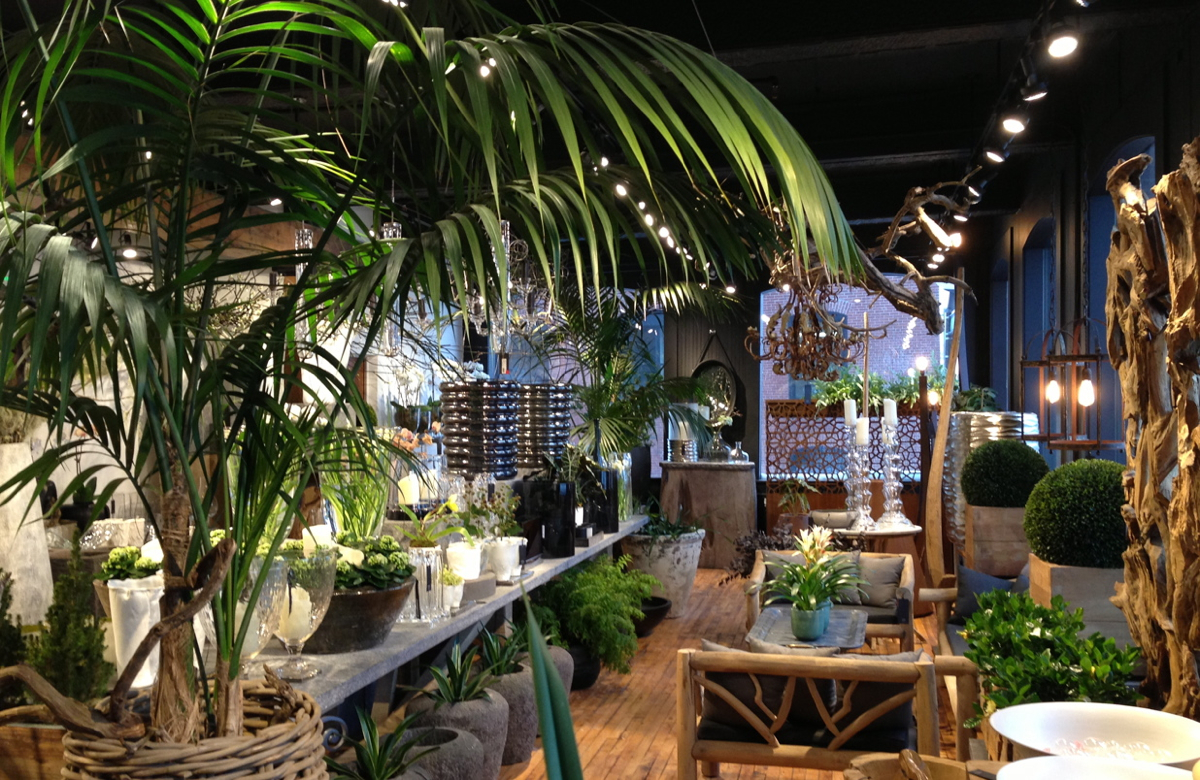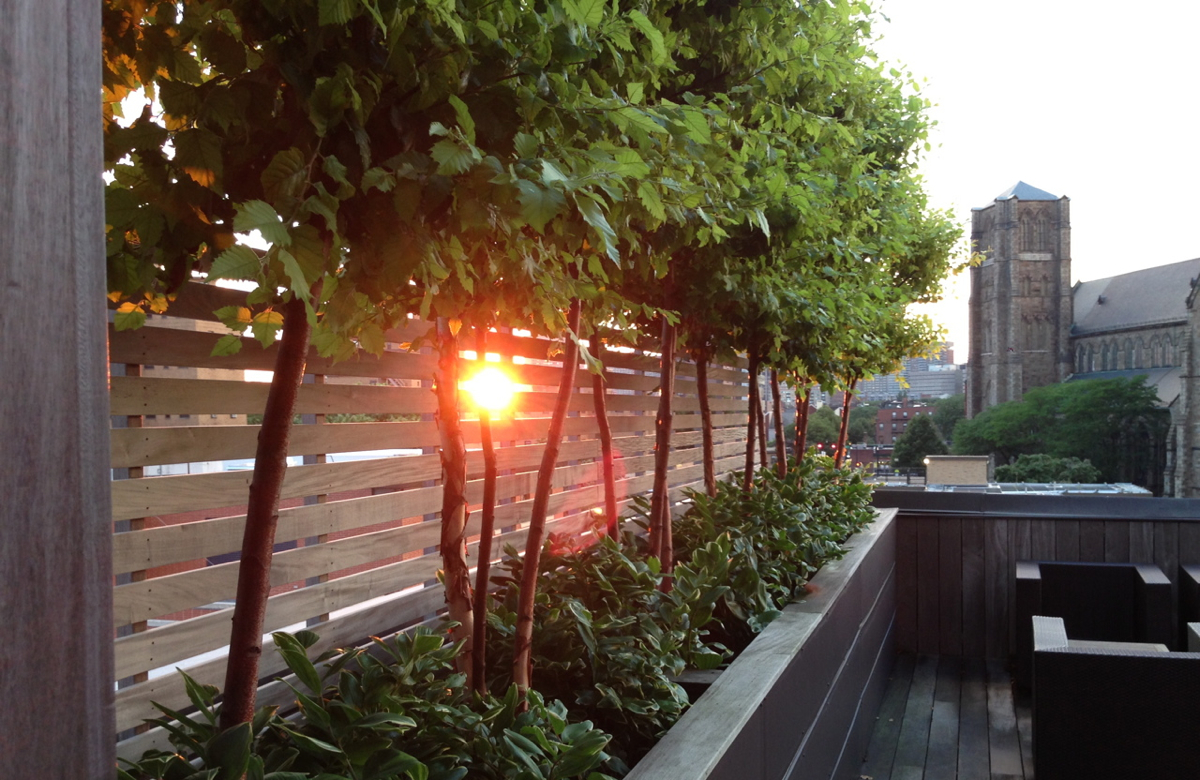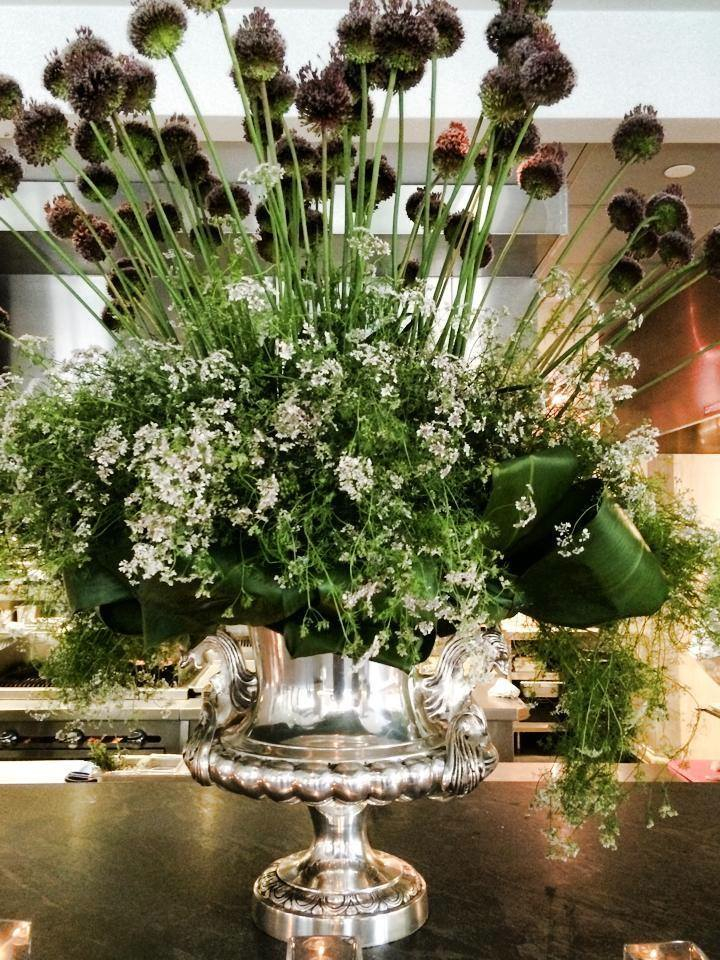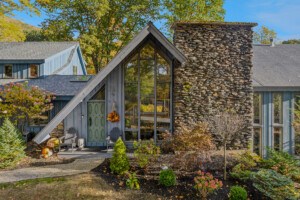10 Questions with Designer Marc Hall

Inside Marc Hall Ojekt in the SoWa district. Photo provided.
You cannot categorize Marc Hall. The former Winston Flowers creative director now has his own design firm and budding home boutique store, while also specializing in flowers, lighting, and installing textiles to re-create iconic spaces. He says he established his eponymous design business by employing “a spirit of fearlessness.”
That spirit extends to Objekt (shown above), the urban garden and home boutique adjacent to Hall’s South End design studio. Featuring mostly glass, wood, and metal, the pieces are culled from his global travels.
Here, Hall talks about balancing “safe” design choices and taking chances—including his work on Chelsea Clinton’s nuptials—and also his personal design style.
1. Objekt opened a year and a half ago. Where do you see the business going?
We want to build our website so that it’ll be formatted for a blog with weekly updates about what’s in the shop and design trends by September. In home design, what’s going to continue is exploring wood. I think wood is sensuous. Embracing something rustic in interiors without feeling like you’re living in a log cabin is also going to be big.
2. You’ve traveled a lot. Where have you been most inspired in your travels, especially in terms of the business?
Belgium and Belgium. Amsterdam. I just got back from Sweden. I’m so glad I live in a time where we can still experience different cultures, architecture, clothing, and of course, the world of horticulture is very different in all of these countries. With globalization—while some of it is for good—I almost fear that someday all languages will become one.
3. How did growing up in Dracut influence your choice of careers?
It was very pastoral back then in the ’60s. We were surrounded by dairy farms, so right away the whole horticulture thing started. The fences would break down and the cows would come into my yard, much to my parents’ dismay, but much to my liking. My fathers mother had beautiful, city-style gardens, with a skinny driveway that came into the yard, a beautiful perennial border. That’s where it all started.
4. What projects are you working on now that help you “blur the lines between the indoors and outdoors,” as you’ve described your aesthetic?
I’m working on two great projects now. One is in SoWa (photo below), we’re designing a rooftop birch grove, outdoor shower, self-sufficient kitchen and a dining area with a lounge, which you can access from two floors. The other project is in Winchester, for a couple creating an English-style cottage garden at their Tudor home. We’re in the last phases of finishing up this outdoor living space with a terraced bluestone patio, kitchen and dining area, a lounge, beautiful perennials, and a fire element. We designed everything, and that’s how [these projects parallel].We’ve been able to physically build the things ourselves with local artisans, steel and woodworkers. We like to work with indie operations.
5. In a creative field, what’s your definition of success?
Obviously, when I sit down with my CFO, there’s a clear picture. At the same time, as an artisan, I measure my success differently, standing back after I install something, and let’s say the directive was challenging for me.
For example, when Chelsea Clinton said her favorite flower was the sunflower, her event planner felt sunflowers weren’t appropriate for her wedding day because it was black-tie. We decided to do them for the rehearsal dinner. We had two 35-foot-tall sculptures in a barn in the Hudson River Valley, they went from floor to ceiling. We created three-dimensional “wallpaper” with chicken wire, and test tubes became my vases. Thousands of them were tied onto the walls and filled with water and sunflowers. It took a team of 12 of us two days to complete, but it blew my minds and it blew their minds. When you stand back and realize you’ve achieved something, and engineered it, safely, and with a spirit of fearlessness—that’s how I measure my success.
6. What does your own place look like?
I recently transitioned from selling my brownstone to living in a loft. It’s austere—black and white so my eyes can rest!
7. How has your personal design evolved at home?
I was a ‘collector’ in my 30s and 40s. I had this thing about coveting and it was just obsessive; there were bric a brac, books everywhere, then I had to move, and it was a purge. I learned to detach from objects. Not every single one of course, but you ask yourself if you can live without this. It’s like “curating,” the uniqueness of the pieces that we like to focus on at Objekt.
8. As a city dweller, what decorating and cultivating tips do you have for someone with a small space?
The main thing is, a small space can look larger with fewer things in it. Plants in themselves are very rewarding—they’re like pets. On those January days, to be able to snip a fresh piece of rosemary or thyme from the windowsill is amazing! In terms of edibles, I like the idea of even being able to grow on a windowsill. I think we’re going to see more indoor gardens in homes. Ornamental is vitally important for me, I just love to see something bloom.
9. Your team at Objekt and Marc Hall Design has grown to acquiring seven full-timers in a year. What’s your collective creative process?
We have operational meetings, but I’d call them ‘inspiration meetings.’ I try to make everybody feel like family here and encourage them to bring ideas that inspire them to the table. I’m critical, I’ll ask questions, but sometimes ideas are like a tougher musical composition that doesn’t strike you immediately.
10. How is floral design perceived on a global scale?
Floral design is considered this obscure art form or craft that in this country doesn’t get the same recognition as a chef. This art form is revered in Japan in the form of ikebana, revered in Belgium, the Netherlands. Everyone knows what a julienne cut is, but do they know the art history of floral design? I think one of the things that could be most fulfilling to me is to be part of a movement to heighten the way society sees these kinds of ‘compositions,’ you’re at a steakhouse for an hour, but five days later (gestures to dahlias), these are still here.
Marc Hall Objekt, 531 Albany St., Boston. Info: 617-391-6236; marchallobjekt.com. Marc Hall Design, 535 Albany St. Info: 617-482-6272, marchalldesign.com.

The sun sets on a rooftop in the South End designed by Marc Hall. Photo provided.

An arrangement for Liquid Art House features allium, cilantro and tea leaves. Photo provided.
This interview has been edited and condensed for clarity.


